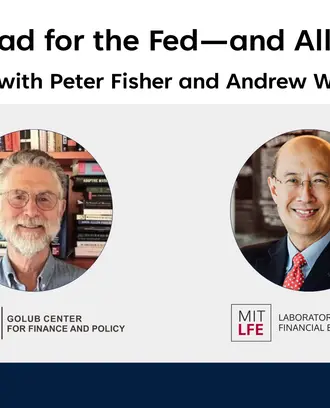GCFP Policy Discussion of Future Reforms for the Federal Home Loan Bank System
The Federal Home Loan Bank System (FHLBS) was created in 1932 during The Great Depression to support mortgage lenders, such as savings and loans, savings banks, and insurance companies by providing low-cost, reliable funding. These funds (loans to members in the form of “advances”) allowed mortgages to be made for home purchase or to pay off old mortgages that were coming due. Originally, there were 12 Federal Home Loan Banks (now 11), and they were owned by their members (including a mutual form of governance). As government-sponsored entities, Federal Home Loan Banks have greater ability to issue debt at lower cost than would otherwise be available to their members. The FHLBS is regulated by the Federal Housing Finance Agency (FHFA), which provides oversight to ensure the FHLBS operates in a safe and sound manner consistent with their statutory mission.
Recently, the FHFA released a report on the FHLBS that discussed potential changes that would affect their mission, sources of liquidity, role in community development, and operational efficiency. The interest in the report was heightened by the role the FHLBS played in providing sizable advances to three large regional banks that failed during the spring of 2023, including Silicon Valley Bank.
On December 11, 2023, the MIT Golub Center for Finance and Policy (GCFP) brought together a panel of experts on housing and financial regulation to examine whether changes to the FHLBS might be warranted. The panelists included the CFO of the Boston Federal Home Loan Bank, Frank Nitkiewicz, former president of the Federal Reserve Bank of Boston and Visiting Scholar at the GCFP, Eric Rosengren, and Master Lecturer in Finance at the Boston University Questrom School of Business, Mark Williams. Ed Golding, Executive Director of the GCFP, hosted.
On revising the mission of the FHLBS to focus more on the core objectives of providing liquidity to members and supporting housing and community development, there was general agreement that greater clarity and specificity defining the mission was useful. Panelists highlighted that it would be beneficial for the FHLBS to target dividend policy and pricing of advances to incentivize more mission-related activities.
There was more controversy around which institutions still needed liquidity support and how that support should be provided during stress periods. Some panelists highlighted that having large financial intermediaries as members of the System is important to get sufficient scale for efficient debt issuance, which could then benefit smaller financial intermediaries. They also highlighted that it was during periods of financial stress that the liquidity provision was most important to support the housing sector. Other panelists highlighted that larger intermediaries already had access to flexible financing and only smaller financial intermediaries did not currently have broader access to capital markets, hence membership in the FHLBS might be restricted for large financial intermediaries. They also highlighted that the FHLBS should not be considered a “lender of last resort,” a role traditionally associated with discount window lending by the Federal Reserve, and that too much liquidity to troubled institutions could result in too much uneconomic lending and delays in closing insolvent institutions. However, all panelists agreed that better understanding liquidity frictions by size of institution over the business cycle would be important for setting appropriate policies.
The panel had significant agreement that it was appropriate to consider how to better implement the goals of supporting affordable housing and community development. That many communities are facing affordable housing challenges was generally clear. Finding ways to better meet these needs, either through greater contributions to affordable housing through FHLBS earnings or developing more creative ways to address community development needs, should be considered.
The range of measures to address operational efficiency and governance provided a variety of perspectives. Some panelists thought the gains from merging banks would come at the expense of the understanding of local market conditions and available community development expertise in the region. Other panelists advocated that many efficiency gains could be done through centralization of activities which did not necessarily entail consolidation of offices. There was general agreement that there were opportunities to standardize some activities to gain efficiencies.
The panel concluded that the FHFA report would generate important discussions about how the FHLBS evolves. Given the changes in financial and real estate markets since their creation in 1932, this report raised important policy issues that the GCFP will continue to track.
CLICK HERE TO VIEW PRESENTATION SLIDES



